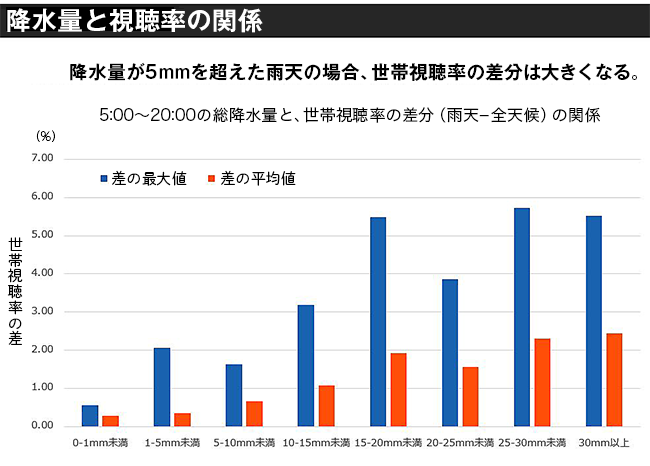We are currently developing a system called "SHAREST" that uses artificial intelligence (AI) to predict future TV ratings with high accuracy. This time, Wataru Kishimoto from the Radio,TV Business Produce Division introduces this development project.
■Can Future Ratings Really Be Predicted?
The media environment surrounding us is currently undergoing extremely rapid change. Even within this landscape, the advertising effectiveness of "television" – a medium that appeals simultaneously to sight and sound – and its power as a medium capable of delivering the same message to many people at once, can be considered truly unique.
On the other hand, within this television medium, client-side demand is growing daily for identifying programs with high "target audience share" and placing commercials on such programs, which strongly influence product purchases.
For example, when promoting a product targeting young male consumers, the desire is to identify programs with a high viewing share among this target demographic and run commercials during those programs.
When purely referencing a program's past ratings data, it might appear to have a high viewing share among young male audiences. Consequently, a commercial for a product targeting this demographic might be aired on that program. However, in reality, the actual ratings for this target audience during the broadcast may be low.
This can occur for various reasons, such as the influence of programs airing before or after it, the impact of programs on other networks airing during the same time slot, changes in the cast, or shifts in the content or topics covered within the program itself.
In such cases, the impact of reduced advertising effectiveness in TV commercials is significant. Therefore, measures are needed to minimize this discrepancy in future broadcasts.
If future ratings can be predicted with high accuracy, when planning to air advertising material for a specific target audience, it becomes possible to broadcast appropriately after accurately gauging the viewership of that demographic. This minimizes situations where "the actual rating falls below the projected rating." In other words, the purpose of predicting ratings is to "avoid reduced advertising effectiveness = aim for maximized advertising effectiveness."
■Predicting ratings for 140 targets using 5,000 data variables!
SHAREST was named as a system that can "share" future data based on past and present data. SHAREST is a system that predicts TV ratings by having AI learn from various data.
Specifically, the version predicting TV ratings one week before broadcast is introduced in the release as "SHAREST_RT" (SHAREST RT / ※"RT" stands for Recent Trend).
The AI utilizes deep learning, a technology considered one of the pillars supporting the Fourth Industrial Revolution. The data used for training includes past ratings data, program genres, cast information, online content viewing trends, preceding and following program schedules, and other networks' programming content. Currently, over 5,000 variables are analyzed.
This data is stored in a database foundation called "RICH FLOW," which serves as training data to improve SHAREST's prediction accuracy. RICH FLOW is a structured database composed of various data meeting the following three conditions:
① A substantial volume of historical data is guaranteed.
② It is time-series data with a consistent granularity.
③ Future stable supply is possible.
By referencing RICH FLOW data, SHAREST can currently predict viewership ratings for 140 targets, with the prediction coverage area expanded to three regions: Kanto, Kansai, and Chubu. Furthermore, in the Kanto region, it is now possible to predict time-shifted viewership ratings for up to 7 days after broadcast.
It is already being utilized for commercial allocation tasks by some clients who possess CM materials for multiple targets.
Moving forward, we plan to enhance SHAREST's prediction accuracy and broaden the range of predictable metrics by expanding this RICH FLOW database. For example, systematically incorporating more detailed viewer profile data into RICH FLOW data would enable calculating prediction values using even more refined target profiles than currently possible.
Furthermore, in the medium to long term, if we can also incorporate data such as viewers' purchase histories after TV ad exposure, it may become possible to predict future purchases by individuals exposed to TV ads.
■Using Weather Data to Predict More Accurate Ratings
Furthermore, at Dentsu Inc., we have now begun developing "Weather Enhanced Marketing, " a framework that leverages weather data to advance advertising marketing.
This framework integrates with the Japan Meteorological Association's extensive historical weather data, analysis results derived from that data, and the latest weather forecast data. We have also begun verifying the RICH FLOW integration of this weather data.
Generally, ratings tend to rise on rainy days or when it's too cold, as people are less likely to go out. For example, analyzing the relationship between precipitation and ratings reveals trends like those shown below.
By visualizing how such trends differ by target audience and identifying patterns by time of day and day of the week, then feeding this alongside weather data into RICH FLOW and incorporating it into SHAREST's training data, more accurate TV ratings prediction becomes possible.
SHAREST aims to further enhance the advertising effectiveness of TV commercials and meet the diversifying needs of clients. Furthermore, given the broad reach of TV advertising, this improvement in advertising effectiveness is expected to significantly impact the success of clients' campaigns. We will continue to vigorously advance development, aiming for the day when each high-precision TV viewership forecast contributes to sales growth and other outcomes.






